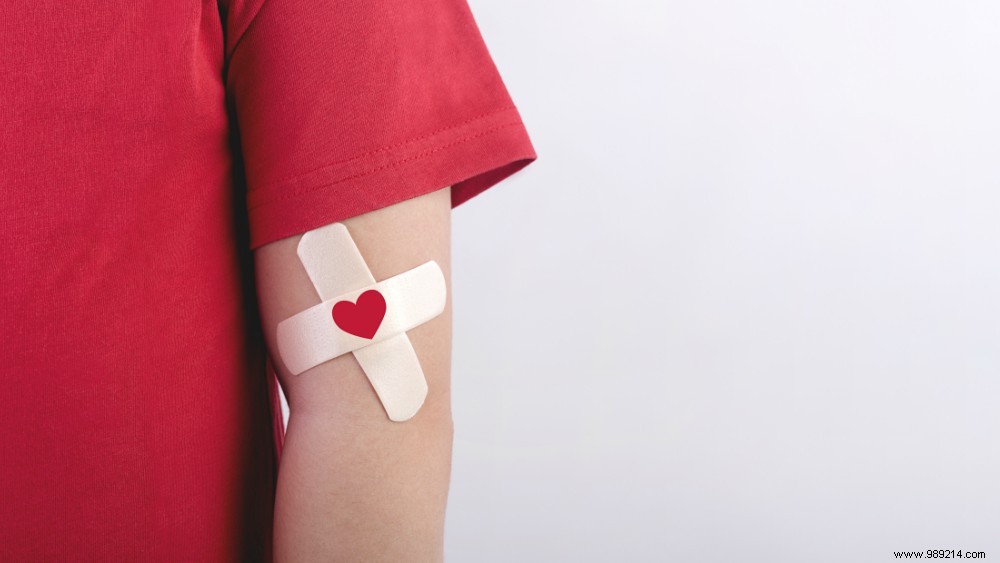
Did you know that there are quite a lot of people who get the shivers from blood, and that four percent even have an outright phobia? Time for a new point of view:because blood does so much for your body.
This is what blood does:
About four and a half liters of blood flows through a woman's body. It circulates through all your veins about sixty times in an hour. It supplies your organs with oxygen and other nutrients, removes waste from your body and keeps your brain alive so you can think and move. “Without blood there is no life, and certainly no healthy life,” says Belgian professor Marc Boogaerts, an authority in the field of hematology and stem cell research. “Without blood, your brain is a greasy blubber with no life in it. Your heart would be a drained pump that no longer works. Your kidneys become a filter that has dried up. And without blood your senses cannot function, so there is no sight either.”
Read also: 'A lot of blood facts in a row'
Blood is also a good mirror of what is happening in your body, because it ends up in all corners. "It can pick up signals in all possible places that are important if something goes wrong," says Boogaerts, who recently bundled his years of knowledge in the book Blood. A history. “If you have an infection on your big toe, your blood will notice it and make antibodies. But we now also know that many types of cancer release some DNA into the blood, which makes it easier for us to detect them. So we can make a lot out of a little bit of blood.
This starts at an early age, in the form of the heel prick a few days after birth. In this way it is immediately clear whether there are, for example, viruses or abnormalities.” The great thing about blood is that it is easily available. If a specialist wants to take a closer look at a piece of heart or bone, it is quite a task. But nobody is surprised when a tube of blood is drawn. “One drop is enough for extensive research,” says Boogaerts, who has been fascinated by blood all his life. “A shortage of platelets, an excess of white blood cells or maybe there is something wrong with the plasma. Blood has always had an important role in science, and that role is far from over.”
The big question is:how does blood manage all this? “That is largely due to the ingenious composition,” says Bas Wouters, internist-haematologist at Erasmus MC. He explains that blood is a liquid tissue, made up of 55 percent blood plasma. Plasma is the liquid part of blood and consists of a combination of water (93 percent) and, among other things, salts and proteins (7 percent). It has an important role in the transport of substances, the clotting of blood and keeping the situation in your body constant. “When blood is in motion, the blood cells float around in the plasma,” says Wouters. “If your blood were to stand still in your body, it would separate into two layers:the plasma at the top, the blood cells floating around at the bottom.”
Read also: 'This is how a blood transfusion works'
The blood cells are made by stem cells in the bone marrow of the ribs, vertebrae, sternum, and pelvis. They are divided into three types, of which 350 million are produced every minute:red blood cells, white blood cells and platelets. Wouters:“The largest part of the blood cells consists of red blood cells, a kind of truck that transports oxygen from the lungs and removes carbon dioxide. Their main component is hemoglobin, an iron-containing protein that gives red blood cells their red color and to which it binds oxygen. A deficiency of red blood cells leads to anemia. If you had no red blood cells at all, you would no longer get oxygen and you would not be able to live.”
When you know what blood does, you also understand how crucial it is to have healthy blood. If you have too few red blood cells, you become pale and you no longer have energy. If you suffer from a shortage of white blood cells, your immune system will be weak and you will get infections more easily. If there are not enough platelets, your clotting will not work properly and you will continue to bleed. Blood is incredibly important, and a lot can go wrong. You can't control everything, but you can give your blood a push in the right direction.
“This helps to keep your blood healthy, because you make red blood cells during exercise,” says molecular biologist and professor Ruud Delwel, who works in the hematology department at Erasmus MC. “Those red blood cells ensure that more oxygen is transported to your muscles, which improves your blood flow and makes you feel fitter and more energetic than when you don't exercise.”
Read also: "Donate blood? You need to know this'
Diet also plays a role in the well-being of your blood. A healthy diet does not contain too much salt, lots of vegetables and little saturated fat and alcohol. Delwel:“If you don't get enough or the wrong nutrients, this can lead to certain deficiencies that you often see in the blood. Consider, for example, a deficiency of folic acid, vitamin B12 or iron – all important building materials for blood cells. A balanced, balanced diet is therefore important, but you cannot prevent the quality of your blood from deteriorating as you get older. That is a natural process that you can do nothing about yourself.
Text Fleur Baxmeier | Image getty images, shutterstock